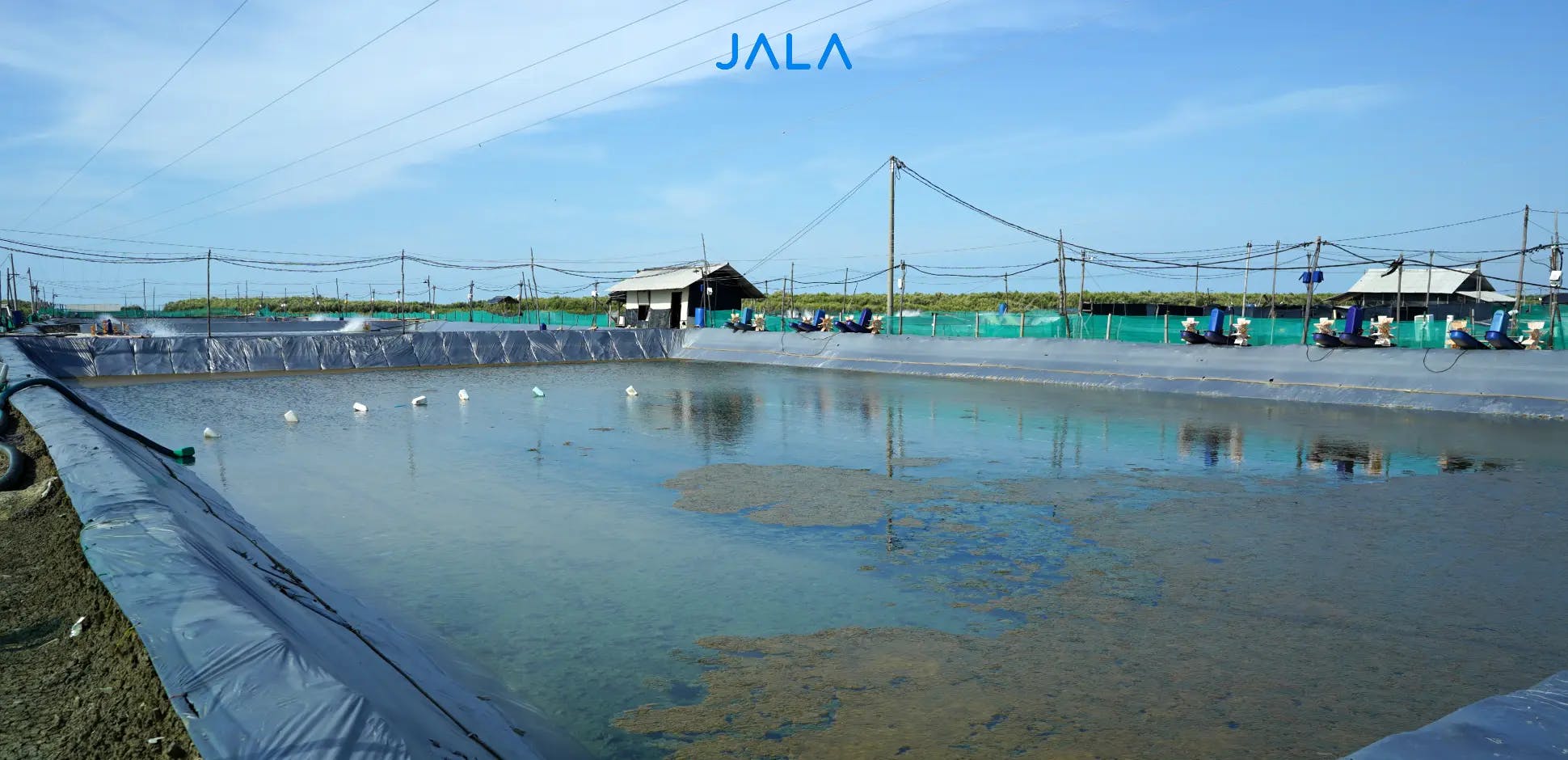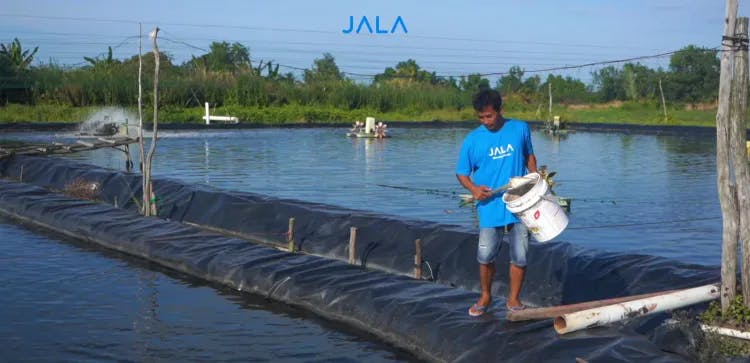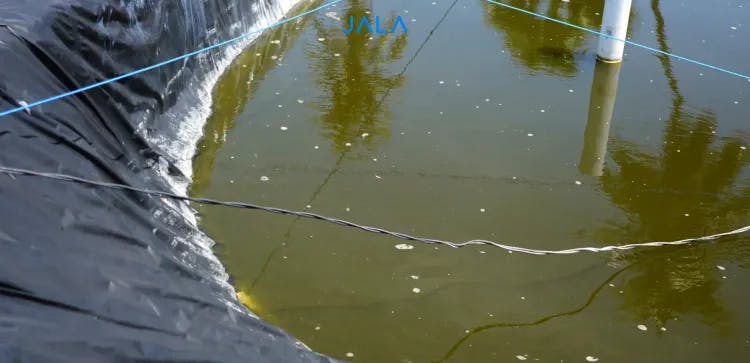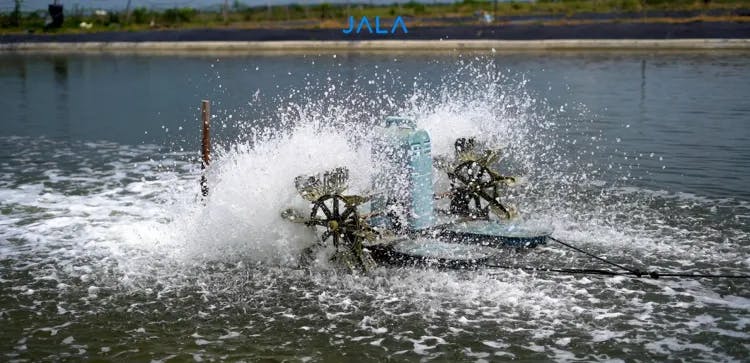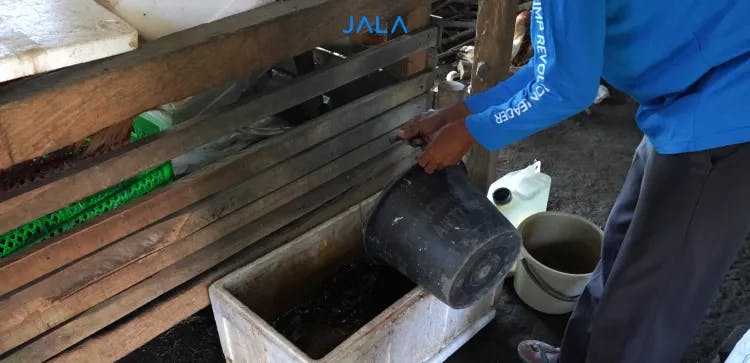The preparation of vannamei shrimp farms is an important step that farmers need to take before starting cultivation for the first time or before entering the next cycle. Preparing a suitable shrimp farm will lead to a conducive ecosystem for shrimp growth throughout cultivation until harvest.
What are the steps in shrimp farm preparation that farmers need to know? Check out the full explanation in this article!
Steps in Preparing Shrimp Farms before Starting Cultivation
Before starting cultivation, farmers should follow these seven steps, from cleaning to aeration.
1. Cleaning
The first stage in preparing vannamei shrimp ponds is cleaning. Cleaning can be done using two methods, dry or wet methods.
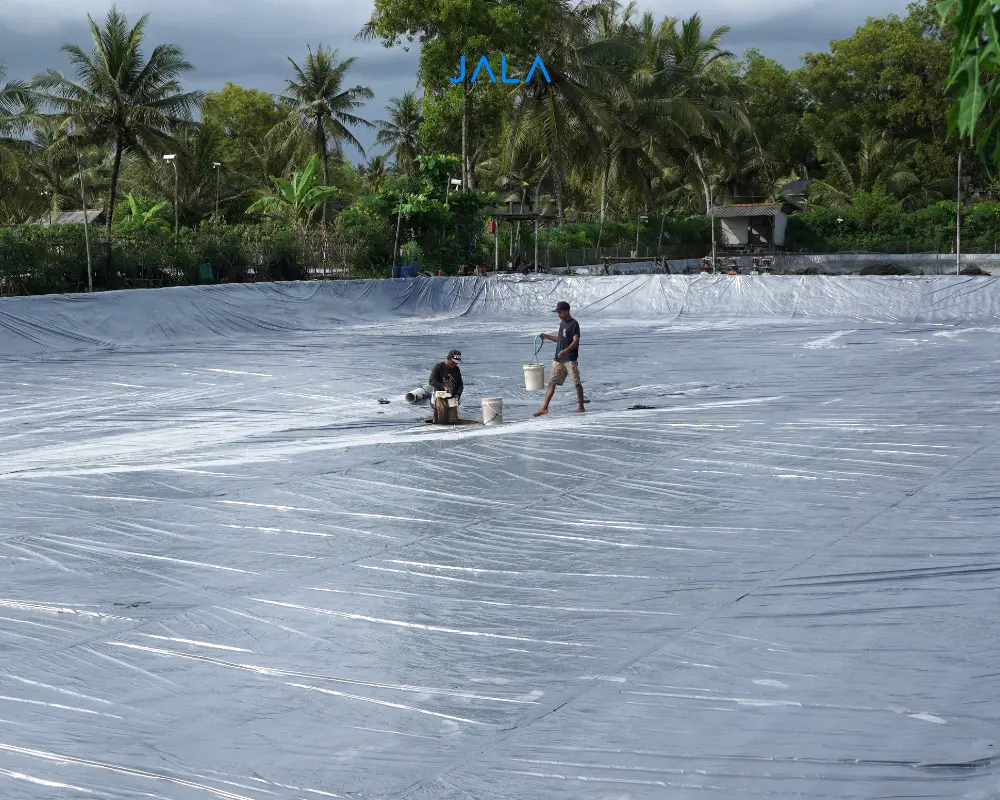
In the dry method, shrimp ponds are left under the sun for 10-30 days. If cleaning is done with the purpose of moving to the next cycle, waste at the bottom of the pond should be disposed of. A plastic brush is used to remove mud. For stickier organisms, a bamboo stick or similarly blunt and hard material is used instead.
Cleaning should preferably be done during the day when the plastic is completely dry so that attached organisms are easily removed. However, this method cannot be applied to all parts of the pond. For areas of the pond that cannot be cleaned with the dry method, farmers can use the wet method. This can be done by spraying water with high pressure to remove remaining waste.
2. Sterilization
Sterilization is the process of removing all organisms in the pond to avoid endangering the shrimp fry. Sterilization normally takes place for 5-7 days. It is accomplished by using chlorine or TCCA on the plastic pond liner/walls, or 50% HCl for concrete ponds. For more effectiveness, sterilization is done during the day when the weather is sunny. Aside from ponds, farming equipment should also be sterilized before being used for cultivation.
3. Liming
Next, the cleaned pond is filled with water and left overnight. Then, flush the pond and repeat this process until the water pH reaches a value above 7.
This process is followed by liming, which helps to increase the pH to 7.8-8.5, an ideal value for shrimp physiology and metabolism. Once the pH exceeds 7, lime can be given at a dose of 100-250 kg/ha. The type of lime that can be used are limestone (CaCO3) or dolomite [CaMg(CO3)2].
4. Pest Eradication
Meanwhile, farmers also need to ensure that no pests enter the cultivation environment. This includes birds, cats, and other animals that can carry diseases. Reducing the potential presence of these pests is done by limiting access and movement of unnecessary technicians and visitors, as well as using additional tools to repel pests.
5. Water Filling
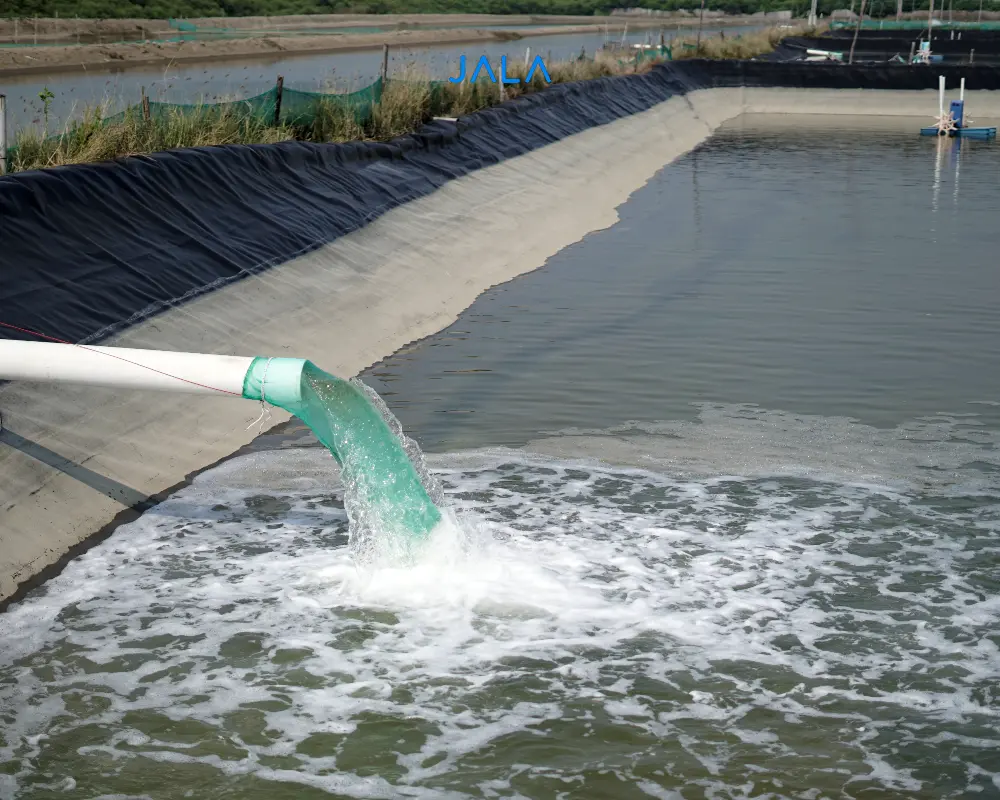 The next step is filling the pond water. Fill the pond up to 100 cm with water of salinity above 15 ppt. Conduct water quality checks to ensure that the measured parameters are ideal for shrimp.
The next step is filling the pond water. Fill the pond up to 100 cm with water of salinity above 15 ppt. Conduct water quality checks to ensure that the measured parameters are ideal for shrimp.
6. Growing Planktons
The next step is growing planktons in the pond. Planktons are required throughout cultivation as a natural food source, oxygen producer, and to reduce the intensity of light that enters the pond so that the environment is more comfortable for the shrimp.
Fertilizers can be given to support plankton growth in the pond. Dissolve the fertilizers in water and spread the solution over the entire pond surface. Then, leave the pond for 7-14 days prior to stocking fry. Plankton growth will be seen from the change in water color to brownish green.
7. Aeration
The final step in preparing vannamei shrimp ponds is aeration with the help of an aerator. The goal is to provide dissolved oxygen (DO) supply in the pond water for shrimp, as well as to avoid dead spots in the pond.
Aerators are switched on 24 hours before stocking to support water circulation. Suitable aeration will improve waste or sediment circulation in dead spots.
Conclusion
After pond construction, farmers need to prepare vannamei shrimp ponds, which include seven steps:
- Cleaning
- Sterilization
- Liming
- Pest Eradication
- Water Filling
- Giving Fertilizers
- Aeration
By following all these steps, farmers can start cultivation more productively. During cultivation, make sure to record and monitor developments in the pond regularly with JALA App.
With JALA App, you can record more than 40 cultivation parameters to understand pond conditions better and take appropriate steps. What are you waiting for? Register yourself at app.jala.tech or download the mobile version from the Google Play Store or App Store!
